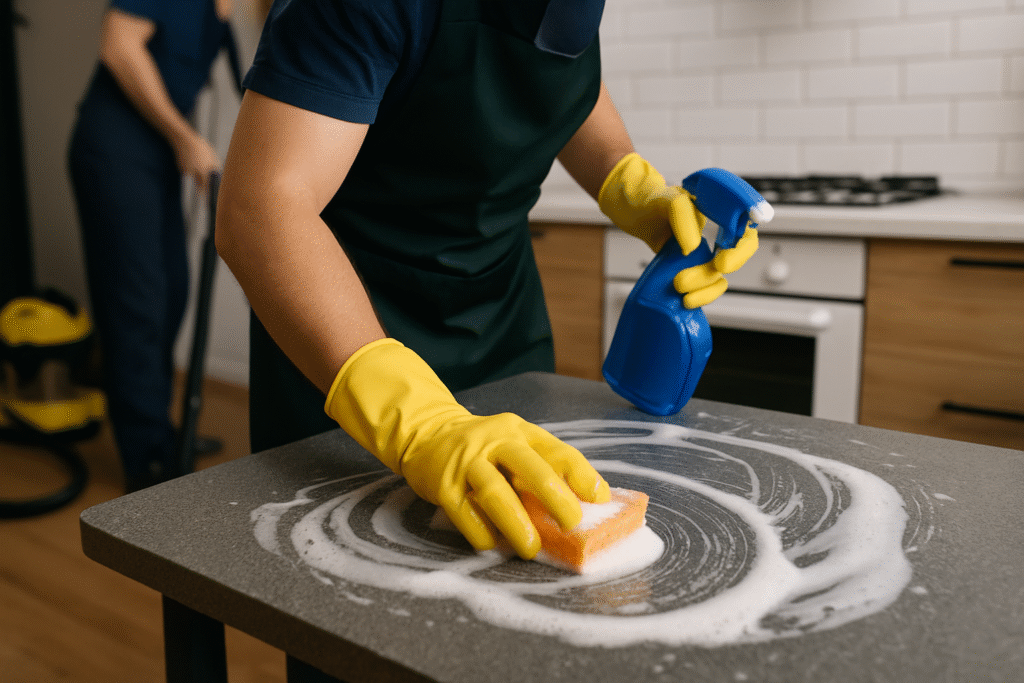The Science of Cleaning: Understanding Cleaning Agents
Cleaning is a fundamental aspect of maintaining hygiene, extending the lifespan of materials, and creating pleasant environments. While cleaning may seem straightforward, the science behind it is surprisingly intricate. It involves understanding the types of dirt, the surfaces being cleaned, and the chemical properties of cleaning agents. This article explores the fascinating world of cleaning agents, unveiling the science that powers their effectiveness.

What Are Cleaning Agents?
Cleaning agents are substances used to remove dirt, stains, grease, and other contaminants from surfaces. They range from common household products like dishwashing liquid and bleach to specialised solutions for industrial applications. The effectiveness of a cleaning agent depends on its chemical composition and its ability to break down and lift away different types of soiling.
The Chemistry of Cleaning
At its core, cleaning relies on the interaction between three key components:
- Soiling Material: The dirt, grease, or grime to be removed.
- Cleaning Agent: The substance that helps break down and remove the soiling material.
- Surface: The material to be cleaned, such as glass, fabric, or metal.
Cleaning agents work through a combination of chemical, mechanical, and thermal actions, often referred to as the “cleaning triangle.” Here is how these mechanisms function:
- Chemical Action: Cleaning agents break down bonds between the dirt and the surface. For instance, detergents contain surfactants, molecules that reduce water’s surface tension and help emulsify oils.
- Mechanical Action: Physical agitation, such as scrubbing or wiping, assists in loosening dirt.
- Thermal Action: Heat can enhance chemical reactions, speeding up the breakdown of grease and other stubborn substances.
Types of Cleaning Agents
1. Detergents
Detergents are the most common cleaning agents, formulated to tackle grease and oil. They contain surfactants, which have hydrophilic (water-attracting) and hydrophobic (oil-attracting) ends. This dual property allows them to lift oily residues from surfaces and rinse them away with water.
2. Abrasives
Abrasive cleaners, such as powders or pastes, contain small particles that physically scrub away tough stains and grime. They are ideal for cleaning hard surfaces like tiles and stainless steel but should be used cautiously on delicate materials.
3. Acids
Acidic cleaners, like vinegar or limescale removers, are effective against mineral deposits and rust. Their low pH levels dissolve alkaline substances, making them ideal for bathroom and kitchen cleaning. However, they should be used carefully to avoid damaging surfaces.
4. Alkalis
Alkaline cleaners, such as baking soda or bleach, have high pH levels and are excellent for cutting through grease and protein-based stains. They are widely used in both household and industrial cleaning.
5. Solvents
Solvent-based cleaners, such as alcohol or acetone, dissolve stubborn residues like glue, paint, or ink. These agents are often used for spot cleaning and require proper ventilation during use.
Safety Considerations
While cleaning agents are essential for maintaining hygiene, their misuse can pose risks to health and safety. Some precautions include:
- Read Labels Carefully: Always follow the manufacturer’s instructions to ensure safe and effective use.
- Wear Protective Gear: Gloves, goggles, or masks may be necessary when using harsh chemicals.
- Avoid Mixing Chemicals: Combining certain cleaning agents, such as bleach and ammonia, can produce toxic fumes.
- Store Safely: Keep cleaning agents out of reach of children and pets, ideally in a secure, well-ventilated area.
Eco-Friendly Cleaning Agents
With growing environmental awareness, many people are turning to eco-friendly cleaning solutions. These products minimise the use of harsh chemicals, relying instead on biodegradable ingredients. Common household items like vinegar, lemon juice, and baking soda can serve as effective, natural alternatives.
Understanding the science behind cleaning agents not only enhances their effectiveness but also promotes safer and more sustainable practices. Whether you are tackling a greasy pan or restoring a stained carpet, selecting the right cleaning agent and applying it correctly is key to achieving the best results. Next time you reach for a cleaning product, you’ll know that its power lies in a carefully balanced combination of chemistry, physics, and practicality.




